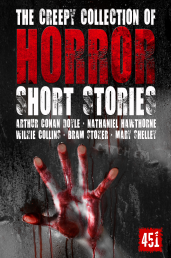 So it seems everywhere I look at the moment are zombie pictures, visions of the walking dead – sometimes relatively unscathed and human-like; mostly fairly bloodily down the road of decay – whether in art, film or on TV. Having been immersed in making a book on zombies has obviously contributed to my high intake of undead depictions, but even when I decide to read something apparently non-zombie, my thoughts return to these shuffling, grasping creatures. Going through my other half’s eclectic collection of books the other day, looking for something new to read, I plucked out John Wyndham’s The Day of The Triffids – a 1951 post-apocalyptic science-fiction tale of worldwide blindness enabling the rise of some rather nasty, stinging, lurching, carnivorousplants…
So it seems everywhere I look at the moment are zombie pictures, visions of the walking dead – sometimes relatively unscathed and human-like; mostly fairly bloodily down the road of decay – whether in art, film or on TV. Having been immersed in making a book on zombies has obviously contributed to my high intake of undead depictions, but even when I decide to read something apparently non-zombie, my thoughts return to these shuffling, grasping creatures. Going through my other half’s eclectic collection of books the other day, looking for something new to read, I plucked out John Wyndham’s The Day of The Triffids – a 1951 post-apocalyptic science-fiction tale of worldwide blindness enabling the rise of some rather nasty, stinging, lurching, carnivorousplants…
Awakening to A Changed World
OK, so first of all, the post-apocalyptic thing is there – a trope much beloved of zombie-filmmakers – but more specifically, I experienced much déja-vu in the opening scenes as the protagonist wakes up in hospital to discover he has been abandoned by his carers and no one is left, save for some desperate, groaning, shuffling people wandering the wards... Where had I seen this before?
Well, most recently, we had just finished watching the first season of gripping TV show The Walking Dead, where Rick Grimes (Andrew Lincoln) awakes from a coma to discover the very same thing. And then I realized that, before that (or around the same time as the first Walking Dead comic book editions, as it happens), was 28 Days Later, where Jim (Cillian Murphy) also arises from his coma to a deserted hospital and heads out to wander to stricken streets. In fact, it turns out, 28 Days director Danny Boyle was directly inspired by The Day of the Triffids, so there you go.
It is unsurprising that this opening set-up is popular, as it enables the introduction of a character who has managed to escape the initial catastrophe and gets a chance of making his way in the new world; it is an effective means to truly engage the reader or viewer in the sheer range of emotions that would envelop anyone faced with such a situation: confusion, anger, disbelief, fear, panic…

Image via game-2
Many Incarnations of Zombie
In …Triffids, both the disorientated, groping newly-blinded humans, and the underestimated, flesh-eating plants themselves have strong echoes of the zombie about them while not being zombies at all. In The Walking Dead and World War Z we have fairly classic Romero-style decomposing zombies who amble around in search of flesh, while the 28 Days Later 'zombies', or 'infected' if your perfer, can actually run – a controversial break from usual zombie rules. All these zombies work on instinct only and show no evidence of memories, emotion, or the ability to learn – unlike some later Romero zombies. Yet even with such a one-track existence that can only bring harm to the human protagonists, we tend to get glimpses of the human lives that have been lost – whether it is through remnants of family photographs or mournful, seemingly beseeching expressions. If you want a refreshingly different take on the zombie then seek out Warm Bodies – Isaac Marion’s novel or the subsequent 2013 film – here you have sentient zombies who pine and love and even become the heroes and saviours of humans.
Blood and Guts
 Then there are films that engender no such sympathy whatsoever towards our zombie friends, who exist solely as the horror device, to create suspense, shock – and a lot of blood. I’m reminded of of one interesting genre-mixing Norwegian zombie flick I saw some time back called Dead Snow (2009) – apparently a ‘zombie comedy’, though I only remember my occasional nervous laugh in between gasps, and groans – this takes the reliable horror slasher format of a group of youngsters holidaying in a remote frozen cabin who are then attacked by… Nazi zombies. Of course. It takes all sorts.
Then there are films that engender no such sympathy whatsoever towards our zombie friends, who exist solely as the horror device, to create suspense, shock – and a lot of blood. I’m reminded of of one interesting genre-mixing Norwegian zombie flick I saw some time back called Dead Snow (2009) – apparently a ‘zombie comedy’, though I only remember my occasional nervous laugh in between gasps, and groans – this takes the reliable horror slasher format of a group of youngsters holidaying in a remote frozen cabin who are then attacked by… Nazi zombies. Of course. It takes all sorts.





